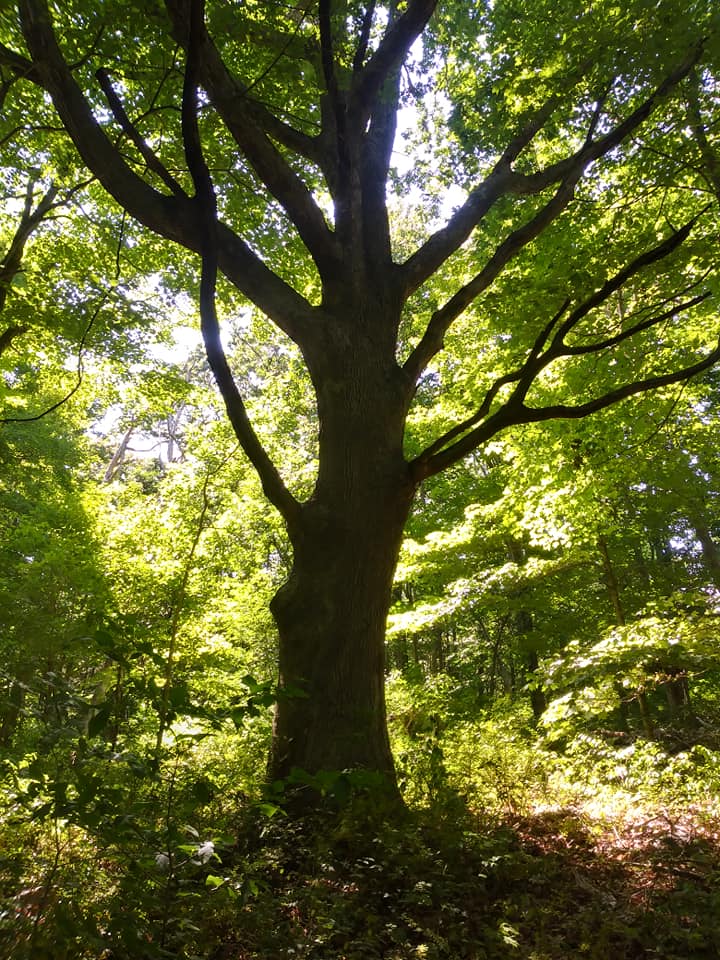JULY 30, 2020 – Two years ago on a flight from Minneapolis/St. Paul to LaGuardia, I sat next to a guy from the extreme northwest corner of Minnesota. In the course of trip, I learned that he loved to hunt, hated wolves, loved dogs, hated the city, loved the country. The recent death of his wife’s brother-in-law, a resident of New Jersey, had forced the rural Minnesotan to board a plane for third time in his life. He was 57.
When the Manhattan skyline appeared through the window, I remarked, “Wow! Look at that! Beautiful!”
“Not to me!” the guy said. “In my opinion they can have it. Why anyone would wanna live within 200 miles of that is beyond me.”
I thought about that guy yesterday, as my wife and I hiked for 90 minutes through the Mt. Archer Preserve in Lyme, Connecticut. Just two hours of New York City—well within a 200-mile radius of Central Park—we found total quietude in a boundless, old-growth woods, surrounded by the finest tableaux of nature’s paint and brush.
Connecticut is small geographically, and yes, many residents in the southwest corner of the state work in NEW YORK CITY, but the “Nutmeg State” boasts more land trusts and conservancies than any other state in the union. In many respects it could be said that the people here are far more conservation minded than the guy who couldn’t understand “why anyone would wanna live within 200 miles of . . . [hell and damnation].”
Along the hiking path we followed yesterday we encountered many low, ancient stone walls holding steady, sleeping soundly amidst a dynamic biosphere—trees, ferns, witch-hazel, raspberries, and numberless other plants living, thriving irresistibly. By one section of the trail we came upon “the ruins,” as marked on the map. These consisted of building foundations, some with stone steps. Over time, amateur archeologists had found remnants of the “civilization” that had built and occupied the “ruins”—a door hinge, a knife blade, various other tools, all heavily rusted but not yet disintegrated. I later learned from a local stone mason that by 1800, much of the surrounding forests had been cleared away; the “ruins” people were sheep farmers of that post-Revolution era, many having fought in the fight against the British.
I imagined meeting the people of that bygone time. How would my English sound to them and theirs to me? I wondered. What would they think of my attire—mainly my hiking shoes, my “wrapped” prescription sunglasses, my . . . smartphone, especially after I snapped their images and my wife’s and mine in a group selfie?
But of greater impact, I thought, what would they think of the larger world? Of their country and its prospects? Would they care? Would they have any concept of what it might become? With what surprise, wonderment, and consternation would they hear my description of things to come, things as they are today?
Or would they be most awed by nature’s irresistible power—the grand woods that arose where their sheep once grazed?
(Remember to subscribe to this blog and receive notifications of new posts by email.)
© 2020 by Eric Nilsson

1 Comment
Any day in which I learn something new is a good one. Today I’ve learned something I never knew about the state I’ve lived in for 35 of my 58 years: that it’s home to ‘more land trusts and conservancies than any other state in the union.’ Who knew? (Not I!)
Comments are closed.